


Cultivating Wine's Essence
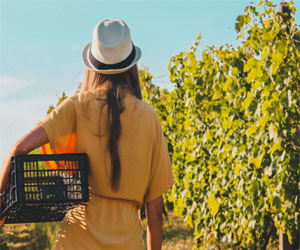
Viticulture, the meticulous and age-old practice of grape cultivation, lies at the heart of winemaking. It is a blend of art and science, encompassing everything from selecting the right grape varieties to nurturing the vines through changing seasons. Viticulture is not only essential to the wine industry, but it also plays a pivotal role in defining the character and quality of the final product.
Grape Varieties: The first step in viticulture is the selection of grape varieties. These selections are based on the region's climate, soil, and traditions. Some grapes thrive in warm, dry climates, while others require cooler conditions. The choice of grape variety is one of the most crucial decisions a viticulturist makes, as it determines the potential of the vineyard.
Terroir: Terroir is a fundamental concept in viticulture. It refers to the unique combination of soil, climate, and geography in a particular region, and it significantly influences the grapes' characteristics. Each region has its terroir, which imparts specific flavors, aromas, and qualities to the grapes. Understanding and harnessing the power of terroir is an essential skill in viticulture.
Vineyard Management: Once the grape varieties are chosen and planted, the next phase involves the management of the vineyard. This includes pruning, training the vines, pest control, and ensuring proper irrigation. Viticulturists must monitor the vines closely to ensure they receive the ideal conditions for growth.
Pruning: Pruning is a critical aspect of vineyard management, as it shapes the vines and influences the quality of the fruit. Pruning helps control the yield of the vine, ensuring that it produces a balanced crop with optimal grape ripeness. The timing and precision of pruning are essential to the health of the vines and the quality of the grapes.
Pest And Disease Control: Protecting the vineyard from pests and diseases is essential for a successful harvest. Integrated pest management techniques are often employed, which may include the use of natural predators, organic pesticides, or careful monitoring of vine health.
Harvesting: The timing of the grape harvest is critical, and it varies depending on the type of wine being produced. For sparkling wines or crisp white wines, grapes may be picked early for high acidity. In contrast, red wines may require longer hang times on the vine for optimal ripeness. Handpicking is still the choice in many vineyards, as it allows for the selective harvesting of the best fruit.
Sustainable Viticulture: In recent years, the wine industry has witnessed a shift towards sustainable viticulture practices. Many vineyards are adopting eco-friendly methods to preserve the natural balance of the environment. This includes organic and biodynamic practices that promote biodiversity, soil health, and minimal chemical intervention.
Challenges Of Viticulture: Viticulture presents its own set of challenges. Factors such as climate change, extreme weather events, and new pest threats can pose risks to vineyard health. Viticulturists must adapt and innovate to mitigate these challenges while maintaining the quality of the grapes.
Viticulture is the foundation of the wine industry, where the journey of winemaking truly begins. It is a harmonious blend of tradition and science, where careful stewardship of the land and vines results in the production of high-quality grapes. The art of viticulture is a testament to human ingenuity, as it weaves together nature's gifts and human expertise, allowing wine enthusiasts to savor the essence of the vineyard in every glass.
A Symphony Of Flavors And Aromas
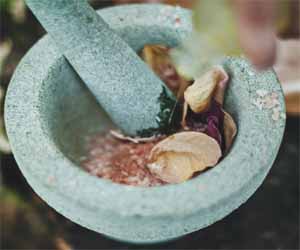 The beauty of herb gardens lies not only in the aromatic and flavorful treasures they offer but also in the diverse range of herbs that can be cultivated. These multifaceted gardens are a testament to the incredible variety of plants that can be grown for culinary, medicinal, and aesthetic purposes. In this article, we'll explore the world of herb garden diversity, celebrating the rich tapestry of flavors, aromas, and colors it can bring to your life.
The beauty of herb gardens lies not only in the aromatic and flavorful treasures they offer but also in the diverse range of herbs that can be cultivated. These multifaceted gardens are a testament to the incredible variety of plants that can be grown for culinary, medicinal, and aesthetic purposes. In this article, we'll explore the world of herb garden diversity, celebrating the rich tapestry of flavors, aromas, and colors it can bring to your life.
The Many Faces Of Herb Diversity
Herb gardens are a treasure trove of plant diversity. They encompass a vast array of herbs, each with its unique characteristics and uses:
Culinary Herbs: These are the culinary classics like basil, oregano, rosemary, and thyme, which infuse dishes with diverse flavors, from sweet and fragrant to earthy and robust.
Medicinal Herbs: Herbs like chamomile, lavender, and echinacea have been used for centuries for their healing properties. They offer a diverse range of remedies, from soothing teas to natural salves.


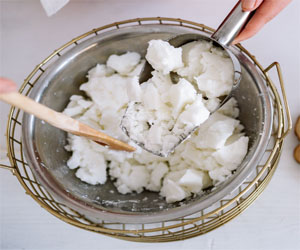


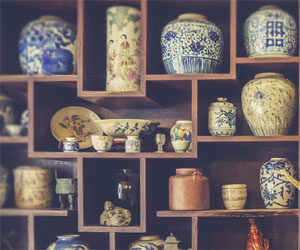


Crafting Your Way To Inner Peace
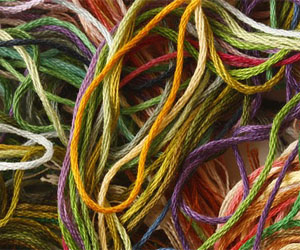 Handmade serenity is a form of active meditation. As you immerse yourself in your craft, you enter a state of flow, where time seems to stand still, and you're completely absorbed in the process. This meditative quality of crafting can be profoundly calming and is akin to mindfulness meditation, a practice proven to reduce anxiety and promote mental and emotional well-being.
Handmade serenity is a form of active meditation. As you immerse yourself in your craft, you enter a state of flow, where time seems to stand still, and you're completely absorbed in the process. This meditative quality of crafting can be profoundly calming and is akin to mindfulness meditation, a practice proven to reduce anxiety and promote mental and emotional well-being.
The tactile nature of handmade creations has a soothing effect on your senses. Feeling the textures, seeing the colors, and manipulating the materials can be a sensory experience that grounds you in the moment. Whether you're kneading dough for homemade bread, shaping clay into pottery, or sewing fabric into a quilt, your senses come alive, enhancing your connection to the world around you.
Moreover, handmade serenity is about the sense of accomplishment that comes with completing a project. Seeing your creations come to life can be incredibly rewarding, instilling a sense of pride and purpose. It's a tangible representation of your creativity and effort, and this feeling of achievement can boost your self-esteem and sense of self-worth.
Crafting also allows you to take control of your surroundings. You can make your home more inviting and cozy with handmade decor, such as quilts, paintings, or handcrafted furniture.
A Global Celebration Of Brews
 Beer And Celebration: Beer has long been an integral part of celebrations and rituals across the world. In Germany, Oktoberfest is a cultural phenomenon that draws millions of visitors from around the globe. In Ireland, St. Patrick's Day is synonymous with toasts of Guinness and other Irish stouts. In the Czech Republic, beer is often enjoyed during traditional festivals and holidays. Such celebrations highlight the cultural significance of beer and its role in fostering community and camaraderie.
Beer And Celebration: Beer has long been an integral part of celebrations and rituals across the world. In Germany, Oktoberfest is a cultural phenomenon that draws millions of visitors from around the globe. In Ireland, St. Patrick's Day is synonymous with toasts of Guinness and other Irish stouts. In the Czech Republic, beer is often enjoyed during traditional festivals and holidays. Such celebrations highlight the cultural significance of beer and its role in fostering community and camaraderie.
Beer And Food Pairing: Beer culture diversity extends beyond the beverage itself to the world of gastronomy. Beer and food pairing is a practice celebrated in many cultures. The hearty brews of Germany are perfect companions to sausages and pretzels, while the delicate flavors of sushi and sashimi in Japan are enhanced by crisp lagers. In the United States, craft beer enthusiasts have elevated beer and food pairings to an art form, experimenting with intricate combinations that rival wine pairings in complexity and creativity.
Traditional Brewing Techniques: Many regions have preserved their traditional brewing techniques, passed down through generations. For example, the indigenous beer of Africa, known as "sorghum beer" or "umqombothi," is brewed using ancestral methods. Similarly, in South Korea, "makgeolli" continues to be made using time-honored techniques, showcasing the beauty of ancient brewing traditions.
 Floral Designs: Flowers are a prevalent theme in embroidery, symbolizing beauty, growth, and life. From delicate daisies to elaborate roses, floral designs are celebrated for their elegance and versatility.
Floral Designs: Flowers are a prevalent theme in embroidery, symbolizing beauty, growth, and life. From delicate daisies to elaborate roses, floral designs are celebrated for their elegance and versatility.
Geometric Patterns: Geometric shapes and repetitive patterns are a staple in many traditional embroidery designs. These symmetrical arrangements create a sense of order and balance.
Animal Motifs: Animals, both domestic and wild, are often featured in embroidery designs. They can represent local fauna, mythological creatures, or personal totems, adding an element of storytelling to the art.
Religious And Symbolic Designs: Embroidery often incorporates religious symbols, such as crosses or mandalas, or other motifs that hold cultural or spiritual significance.
Contemporary Innovations: In the modern era, embroidery designs have evolved to embrace contemporary aesthetics and innovations. Artists and designers experiment with unconventional materials, techniques, and themes, pushing the boundaries of traditional embroidery. This includes abstract designs, pop culture references, and even political statements, showcasing the adaptability of the craft.
Designing With Precision: Embroidery designs require careful planning and execution. Artists or embroiderers sketch the design on the fabric and choose the appropriate threads, colors, and stitch types to bring their vision to life. The precision and patience involved are integral to the art form.
A Time-Honored Craft
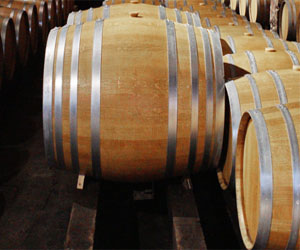 Once the grapes are collected, they are processed through various methods, including crushing, destemming, and pressing. The choice of these methods, like the choice of grape variety, varies from region to region, reflecting the traditions and techniques that have been perfected over time.
Once the grapes are collected, they are processed through various methods, including crushing, destemming, and pressing. The choice of these methods, like the choice of grape variety, varies from region to region, reflecting the traditions and techniques that have been perfected over time.
Fermentation And Aging: The fermentation stage is where the magic happens. Yeasts convert the grape sugars into alcohol, and this is a stage where winemaking traditions show their depth. Some wineries still rely on wild, naturally occurring yeasts for fermentation, while others use cultivated yeasts to ensure consistency. The decision can greatly influence the wine's character.